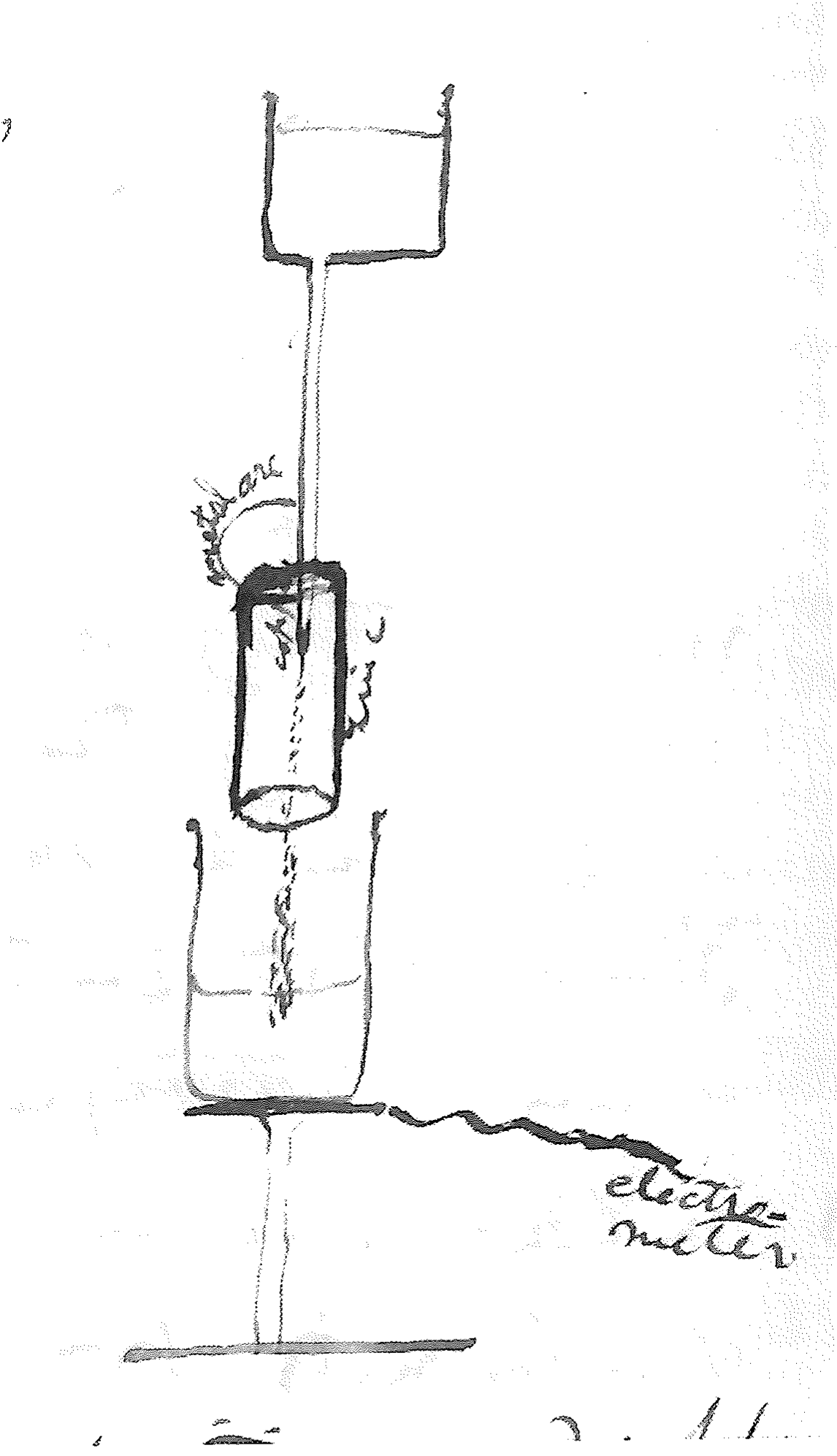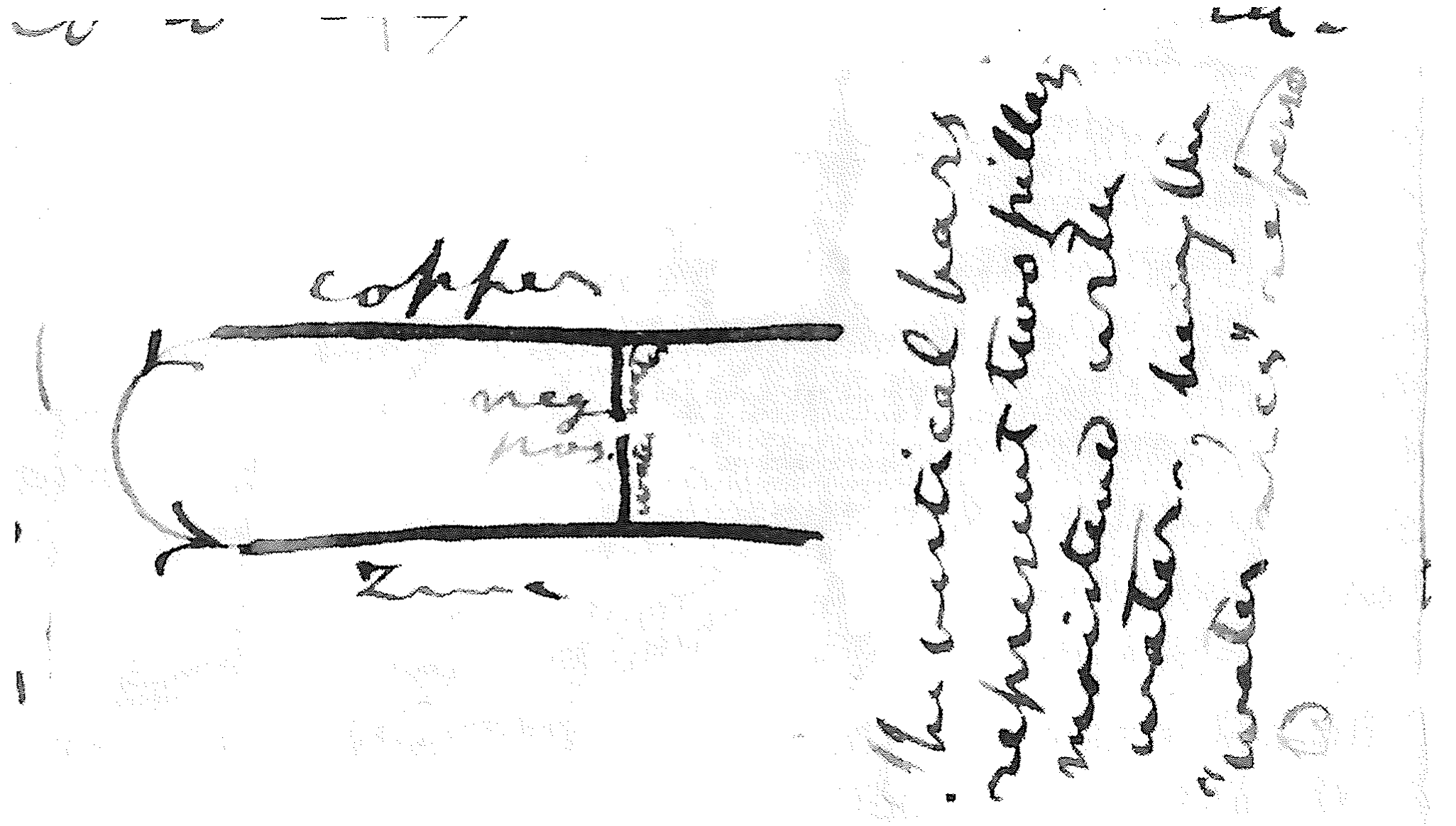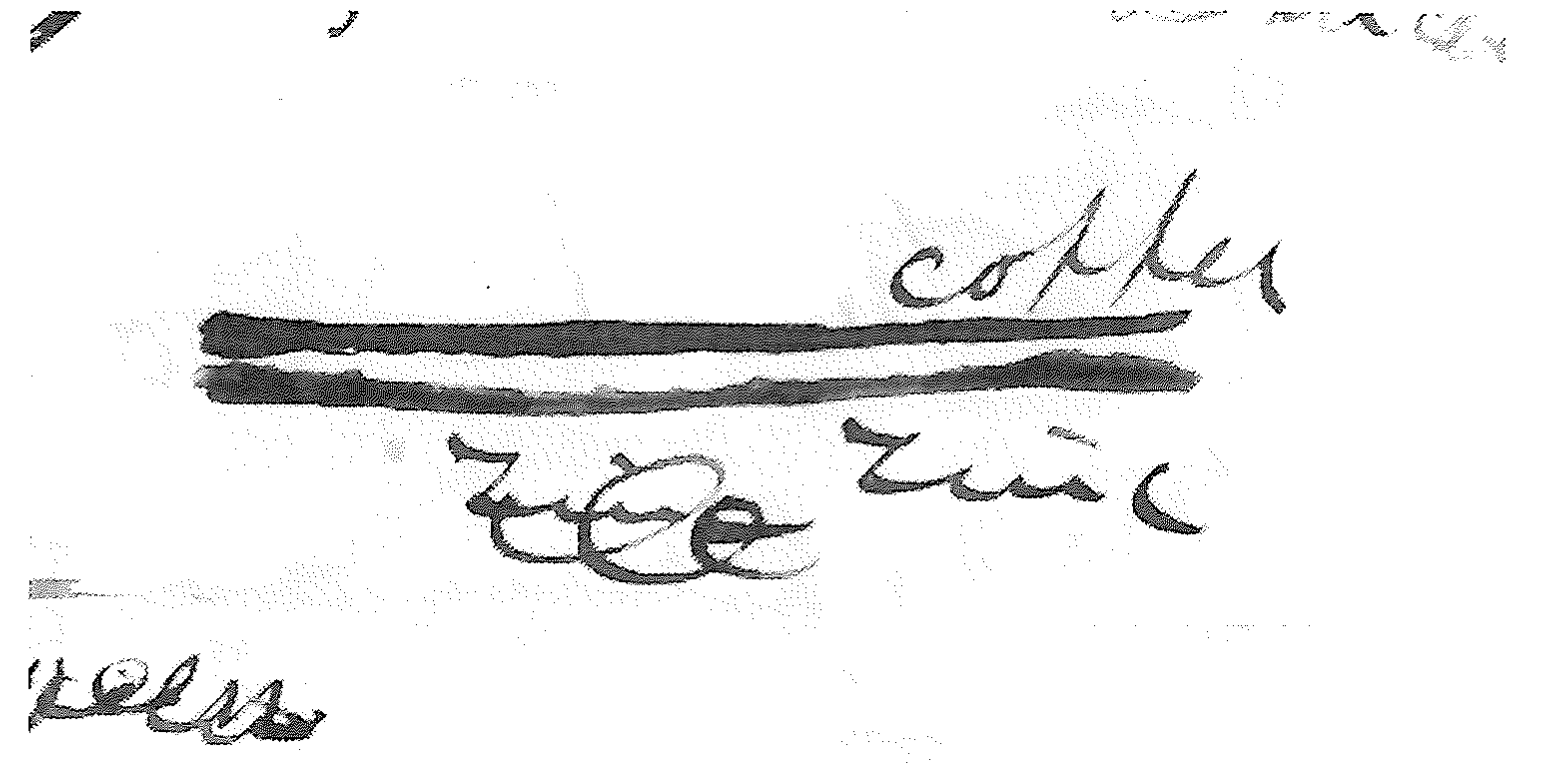William Thomson to Faraday 17 November 1859
2 College, Glasgow | Nov 17, 1859
My dear Sir
I have made an experiment today which illustrates remarkably the electropolar state which you have always urged must exist in the particles of an electrolyte between two metals having different degrees of affinity for one of its elements; and I cannot deny myself the pleasure of immediately telling you of it.
An uninsulated can of water was placed so as to discharge its contents through a vertical copper pipe and fine nozzle of copper in a stream breaking into drops after about an inch, and falling into an insulated jar connected with an electrometer.
 A tube of metal, either zinc, composition (chiefly copper), or common sheet copper, was sometimes held round the stream of water and sometimes it was left simply with air and the walls of the room round it. In the last mentioned case the electrometer quickly showed strong negative, because the air of the room and a plate glass electrical machine not far off which had been in use, electrified the uninsulated metal tube & issuing stream negatively by influence. When a copper tube was held round the stream the electrometer showed little or no effect. When a piece of bent sheet zinc was held in the hand round the stream, & the vertical copper pipe was touched by the same hand, the electrometer shewed nothing or slight positive. When a metal wire connected the sheet zinc round the stream with the copper pipe from which the stream issued, the electrometer very quickly gathered a strong negative charge. In 30 secs: it showed 65° negative. When a composition metal (nearly copper) tube was used, the electrometer gathered 7° neg. in the 30 secs. When a wide zinc tube, about 6 inches diameter & 12 inches long was held vertically so that the stream broke into drops about its centre the electrometer gathered negative quickly, provided the zinc was connected by metal with the copper from which the water issued. By using a well insulated support a spark may readily be obtained by allowing the charge to gather. I shall write to you when I have got one.
A tube of metal, either zinc, composition (chiefly copper), or common sheet copper, was sometimes held round the stream of water and sometimes it was left simply with air and the walls of the room round it. In the last mentioned case the electrometer quickly showed strong negative, because the air of the room and a plate glass electrical machine not far off which had been in use, electrified the uninsulated metal tube & issuing stream negatively by influence. When a copper tube was held round the stream the electrometer showed little or no effect. When a piece of bent sheet zinc was held in the hand round the stream, & the vertical copper pipe was touched by the same hand, the electrometer shewed nothing or slight positive. When a metal wire connected the sheet zinc round the stream with the copper pipe from which the stream issued, the electrometer very quickly gathered a strong negative charge. In 30 secs: it showed 65° negative. When a composition metal (nearly copper) tube was used, the electrometer gathered 7° neg. in the 30 secs. When a wide zinc tube, about 6 inches diameter & 12 inches long was held vertically so that the stream broke into drops about its centre the electrometer gathered negative quickly, provided the zinc was connected by metal with the copper from which the water issued. By using a well insulated support a spark may readily be obtained by allowing the charge to gather. I shall write to you when I have got one.
That the result must be as I found it seemed obvious before I made the experiment, from the following considerations.
 If the two water arcs (moist cotton wicks for instance) shown on the sketch are brought together a current flows in the direction shown by the arrowhead. Hence before the ends of the water arcs are united it must tend to flow and these opposed ends must be oppositely electrified;- that connected with the zinc positively and that connected with the copper negatively. If drops from the former are allowed to fall through a hole in the zinc they must each carry away, negative electricity, by the dynamical power of the gravitation of the water, and communicate it to any conductor into which they may be allowed to fall.
If the two water arcs (moist cotton wicks for instance) shown on the sketch are brought together a current flows in the direction shown by the arrowhead. Hence before the ends of the water arcs are united it must tend to flow and these opposed ends must be oppositely electrified;- that connected with the zinc positively and that connected with the copper negatively. If drops from the former are allowed to fall through a hole in the zinc they must each carry away, negative electricity, by the dynamical power of the gravitation of the water, and communicate it to any conductor into which they may be allowed to fall.
This explains completely Volta’s contact & separation experiment, by electrochemical action, if there be any moisture present between the plates.
 For at the instant when the last point of metallic contact still exists the moist film on the copper surface must be negative to the moist film on the zinc surface; and the thinness of the separating air must make the quantity large even for a small difference of potentials between the opposed water surfaces. Immediately & even after contact (the insulation by glass handles being perfect) each metal has and keeps the electricity its (assumed moist) surface had when opposed to the other, and thus the copper shows negative and the zinc positive after separation. It would be important to try volta’s experiment in artificially dried atmospheres of various gases.
For at the instant when the last point of metallic contact still exists the moist film on the copper surface must be negative to the moist film on the zinc surface; and the thinness of the separating air must make the quantity large even for a small difference of potentials between the opposed water surfaces. Immediately & even after contact (the insulation by glass handles being perfect) each metal has and keeps the electricity its (assumed moist) surface had when opposed to the other, and thus the copper shows negative and the zinc positive after separation. It would be important to try volta’s experiment in artificially dried atmospheres of various gases.
The experiment which I made today was done by the aid of my divided ring electrometer - Perhaps one cell Daniell would, as the electrometer stood in the experiment, have given about 2° - The effects I observed are capable of indefinite accumulation, &, to the extent I had them, would I believe have shown on a gold leaf electrometer.
Believe me Yours most truly | William Thomson (T.O.)
P.S. I think I must ask that, if wanted to lecture on atmospheric electricity1, I should have some time later than the 7th of May, as I fear I should have no time for preparation sufficient before the 1st of the month.
Professor Faraday
Bibliography
THOMSON, William (1860b): “On Atmospheric Electricity”, Proc. Roy. Inst., 3: 277-90.
Please cite as “Faraday3677,” in Ɛpsilon: The Michael Faraday Collection accessed on 5 May 2024, https://epsilon.ac.uk/view/faraday/letters/Faraday3677